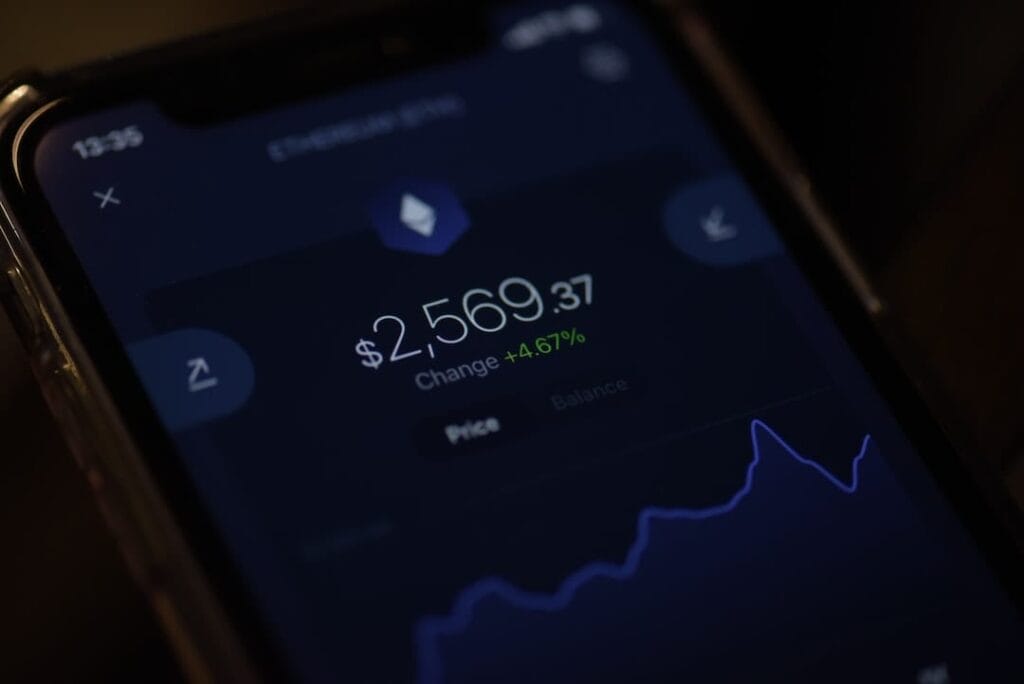Streaming royalties have become a hot topic in the music industry in recent years. With the rise of streaming platforms like Spotify, Apple Music, and Tidal, the way artists earn money from their music has drastically changed. Understanding streaming royalties is crucial for artists and industry professionals alike, as it directly impacts their earnings and overall success in the industry.
Disclaimer: This information is general in nature and for informational purposes only. It is not personal financial advice and has not taken into account your personal financial position or objectives. Make sure to refer to a licensed financial or tax advisor.
Table of Contents
Key Takeaways
- Streaming royalties are payments made to artists for the use of their music on streaming platforms.
- The rise of streaming platforms has had a significant impact on artist earnings, with some artists earning more from streaming than from traditional sales.
- Streaming royalties are calculated based on a variety of factors, including the number of streams, the type of subscription, and the country in which the stream occurs.
- Record labels play a significant role in artist royalties, often taking a percentage of the earnings in exchange for their services.
- While streaming offers many benefits for independent artists, such as increased exposure and access to a global audience, it also has its drawbacks, including lower royalty rates and increased competition.
Royalty Payout Rates For Streaming
The royalty rate for streaming can be broken down into different types of royalties, each with its own rate:
Mechanical Royalties
- Mechanical Royalty Rate: For interactive streams, the mechanical royalty rate is approximately 9.1 cents per stream for songs under 5 minutes and 1.75 cents per minute for songs over 5 minutes 1 .
Public Performance Royalties
- Public Performance Royalty Rate: Typically, public performance royalties are about 6% of a streaming service’s total revenue 1 .
Payout to Recording Owners
- Payout Distribution: The payout to recording owners varies and depends on the deal with streaming platforms. Musicians can make from around 45% to 100% of the payout, with a common distribution being 45% to featured artists, 5% to non-featured artists, and 50% to the rights owners of a song (e.g., label) 1 .
Royalty Payouts Per Platform
- Per Stream Rates: Different streaming platforms pay different rates per stream, for example:
- Tidal Music: $0.01284 per stream
- Apple Music: $0.008 per stream
- Amazon Music: $0.00402 per stream
- Spotify: $0.00318 per stream
- YouTube Music: $0.002 per stream
- Pandora: $0.00133 per stream
- Deezer: $0.0011 per stream 2
Sound Recording Royalty Rate
- Sound Recording Royalty Rate: For on-demand subscription streaming, the sound recording royalty rate is 58.60% of revenue 3 .
Mechanical Royalties from Interactive Services
- All-In Royalty Pool: For interactive services, the Copyright Royalty Board sets an “All-In Royalty Pool” of 10.5% of music service revenue, from which performance royalties are deducted to come up with the “Payable Royalty Pool” 4 .
Mechanical Royalty Rate for Streaming
- Mechanical Royalty Rate for Streaming: The mechanical royalty rate for streaming is about 0.06 cents per stream 5 .
It’s important to note that these rates are subject to change and can vary based on individual agreements, statutory rates, and other factors. Additionally, the actual amount artists receive can be affected by deductions, recoupments, and the terms of their contracts.
Understanding Streaming Royalties: An Overview
Streaming royalties refer to the payments that artists receive when their music is streamed on platforms like Spotify or Apple Music. These royalties are typically paid out to artists and rights holders based on the number of streams their music receives. There are different types of streaming royalties, including mechanical royalties, performance royalties, and synchronization royalties.
For artists, understanding streaming royalties is essential because it directly affects their income. In the past, artists relied heavily on album sales and touring revenue to make a living. However, with the decline of physical album sales and the rise of streaming platforms, artists now rely more on streaming royalties as a source of income. Therefore, it is crucial for artists to have a clear understanding of how these royalties are calculated and how they can maximize their earnings from streaming.
The Rise of Streaming Platforms and Its Impact on Artist Earnings
Streaming platforms have experienced significant growth in recent years, with millions of users worldwide subscribing to services like Spotify and Apple Music. This shift in consumer behavior has had a profound impact on artist earnings. In the past, artists would earn a significant portion of their income from album sales. However, with the decline of physical album sales and the rise of streaming platforms, artists now earn a smaller percentage of their income from album sales and more from streaming royalties.
While streaming has provided artists with a new revenue stream, it has also led to a decrease in overall earnings for many artists. This is because the royalty rates for streaming are significantly lower than those for traditional sales. For example, an artist may earn only a fraction of a cent per stream, whereas they would earn several dollars from the sale of an album. This has led to a debate about the fairness of streaming royalties and whether artists are being adequately compensated for their work.
How Streaming Royalties are Calculated: A Breakdown
Streaming royalties are calculated based on several factors, including the number of streams, the royalty rate, and the artist’s share of the royalties. The number of streams refers to the total number of times a song is played on a streaming platform. The royalty rate is the amount of money that is paid out per stream, which can vary depending on the platform and the artist’s contract.
To calculate streaming royalties, the total number of streams is multiplied by the royalty rate, and then the artist’s share is deducted. For example, if a song has been streamed 1 million times and the royalty rate is $0.005 per stream, the total royalties would be $5,000. However, this amount would then be divided between the artist and any other rights holders involved in the song.
The Role of Record Labels in Artist Royalties
Record labels play a significant role in streaming royalties for artists. When an artist signs with a record label, they typically enter into a contract that outlines how royalties will be split between the artist and the label. In many cases, record labels take a significant percentage of streaming royalties as part of their compensation for promoting and distributing an artist’s music.
For signed artists, record labels often handle all aspects of royalty collection and distribution. This can be beneficial for artists who may not have the time or resources to manage these tasks themselves. However, it also means that artists have less control over their earnings from streaming and may receive a smaller percentage of royalties compared to independent artists.
Independent artists, on the other hand, have more control over their streaming royalties but also have more responsibilities. They are responsible for collecting and distributing their own royalties, which can be a time-consuming process. However, independent artists also have the potential to earn a larger percentage of royalties compared to signed artists.
The Pros and Cons of Streaming for Independent Artists
Streaming has both advantages and disadvantages for independent artists. On the positive side, streaming platforms provide independent artists with a level playing field, allowing them to reach a global audience without the need for a record label. This can significantly increase their exposure and potentially lead to more opportunities for success.
Additionally, streaming platforms offer independent artists the opportunity to earn money from their music without the need for physical distribution or expensive marketing campaigns. This can be especially beneficial for artists who are just starting out or who have limited resources.
However, there are also disadvantages to streaming for independent artists. One of the main challenges is the low royalty rates offered by streaming platforms. Independent artists often struggle to earn a significant income from streaming alone, especially if they do not have a large following or a strong marketing strategy in place.
To maximize their earnings from streaming, independent artists need to focus on promoting their music on streaming platforms and building a loyal fan base. They can also explore other revenue streams, such as merchandise sales or live performances, to supplement their income from streaming.
The Effect of Streaming on Music Consumption Patterns
The rise of streaming platforms has had a profound impact on music consumption patterns. In the past, consumers would typically purchase albums or singles and listen to them repeatedly. However, with the advent of streaming, consumers now have access to millions of songs at their fingertips and can listen to them on-demand.
This shift in music consumption patterns has led to changes in how artists earn money from their music. Instead of relying on album sales, artists now earn money based on the number of streams their music receives. This has led to a greater emphasis on singles and individual tracks rather than full albums.
Streaming has also had a significant impact on music discovery. With the ability to explore new artists and genres easily, consumers are more likely to discover music that they may not have otherwise been exposed to. This has created new opportunities for independent artists to gain exposure and build a fan base.
The Debate on Fairness in Streaming Royalties
The debate on fairness in streaming royalties centers around the low royalty rates offered by streaming platforms. Many artists argue that they are not being adequately compensated for their work, especially considering the millions of streams their music receives.
On the other hand, streaming platforms argue that they are providing artists with a new revenue stream and that the low royalty rates are necessary to cover the costs of running the platform and paying other rights holders, such as songwriters and publishers.
There are also different perspectives on the issue within the industry. Some artists and industry professionals believe that streaming royalties should be increased to better compensate artists for their work. Others argue that the focus should be on finding alternative revenue streams, such as live performances or merchandise sales, rather than relying solely on streaming royalties.
Finding a fair solution to the issue of streaming royalties is crucial for all parties involved. Artists deserve to be compensated fairly for their work, while streaming platforms need to ensure that they can continue to operate and provide a platform for artists to reach a global audience.
The Future of Streaming Royalties: Predictions and Trends
The future of streaming royalties is uncertain, but there are several predictions and trends that can be observed in the industry. One prediction is that streaming royalty rates will continue to increase as more artists and industry professionals advocate for fair compensation. This could lead to higher earnings for artists and a more sustainable model for streaming platforms. In addition, as competition among streaming services grows, platforms may seek to differentiate themselves by offering better payout structures to attract artists and content creators. This shift could also encourage more innovative distribution methods, similar to how the top real estate crowdfunding are set to provide new avenues for investment and profit sharing in various sectors. Ultimately, the landscape of streaming royalties may evolve into a more equitable system that benefits both artists and their audiences.
Another trend is the emergence of alternative revenue streams for artists. As streaming royalties continue to be a topic of debate, artists are exploring other ways to earn money from their music, such as through live performances, merchandise sales, and brand partnerships. This diversification of income sources can help artists mitigate the impact of low streaming royalty rates.
It is also important for artists and industry professionals to stay informed about changes in the industry and adapt to new trends. The music industry is constantly evolving, and it is crucial for artists to be proactive in understanding and navigating these changes.
How Artists Can Maximize Their Earnings from Streaming
There are several strategies that artists can employ to maximize their earnings from streaming. One of the most important strategies is to promote their music on streaming platforms. This can be done through social media marketing, playlist placements, and collaborations with other artists.
Artists should also focus on building a loyal fan base and engaging with their audience. This can be done through regular releases, live performances, and interacting with fans on social media. By building a strong fan base, artists can increase their streams and potentially earn more royalties.
Negotiating record label contracts is another important aspect of maximizing earnings from streaming. Artists should carefully review their contracts and ensure that they are receiving a fair share of streaming royalties. They should also consider working with a lawyer or industry professional who can help them navigate the complexities of record label contracts.
The Importance of Transparency in Streaming Royalties
Transparency in streaming royalties is crucial for artists and industry professionals. It allows artists to understand how their music is being monetized and ensures that they are being fairly compensated for their work.
Unfortunately, there have been several instances of lack of transparency in the industry. For example, there have been reports of streaming platforms not accurately reporting the number of streams or not paying out royalties in a timely manner. This lack of transparency can have a significant impact on an artist’s earnings and overall success in the industry.
Advocating for transparency in streaming royalties is essential for artists and industry professionals. This can be done through supporting organizations that promote transparency, such as the Union of Musicians and Allied Workers, and by speaking out about the issue on social media and in industry forums.
Understanding streaming royalties is crucial for artists and industry professionals in today’s music industry. Streaming has become the primary mode of music consumption, and artists rely on streaming royalties as a source of income. By understanding how streaming royalties are calculated, artists can maximize their earnings and advocate for fair compensation.
It is also important for artists to stay informed about changes in the industry and adapt to new trends. The music industry is constantly evolving, and artists need to be proactive in understanding and navigating these changes.
By promoting transparency in streaming royalties and advocating for fair compensation, artists can help create a more sustainable and equitable music industry for all parties involved.







